By: Fiona Boskovic
Gallivant News, coming to you live from Johannesburg, South Africa. I’m your host, Fiona, and this is what we’ve been up to since leaving Costa Rica.
Starting off with our 100 hour travel day, we returned to the US for some very quick layovers in Houston and Newark airports. Stopping in Houston was very rushed, as we scrambled through customs and picked up our bags, just to recheck them immediately after. Globies then had to choose whether they wanted to spend their precious few minutes going to the bathroom or buying $15 pre-made sandwiches. Thankfully, our layover in Newark was longer and Jean-Luc and I made the most important pitstop- milkshakes!
Fun fact: milkshakes outside of the US don’t use ice cream, they’re literally shaken milk.
Upon boarding the plane, our layover became even longer as we encountered technical difficulties. First, they had forgotten to charge the plane? But never fear, the issue was fixed in about an hour and they even gave us some extra fuel just in case!
Unfortunately, they went a little overboard and accidentally gave us 1500 pounds too much so then we weren’t able to take off. We finally departed about two hours later than scheduled, starting the countdown for our final fifteen hour flight, two of which were spent group watching How to Lose a Guy in 10 Days.
Arriving in South Africa, our CGEE leader, Pinias, greeted us at the airport to take us to 7th Street Guesthouse, where we’ll be staying for the next ten days. Located in Melville, a suburb in Joburg, our guesthouse has easy access to several restaurants, cafes, and shops along 7th Street.
We started strong with class on our first day, going over our course guidelines and schedule for the next month. After class, we took our super secret staircase up to the aforementioned 7th street for a group lunch at De Baba Eatery.



Following lunch, we set off on a driving tour through Soweto, the South West Townships which formed in the years following World War II as part of the apartheid regime’s policies of racial segregation. Soweto is a historically significant area where the struggle against apartheid found a powerful voice. In particular, the Soweto Uprising of 1976 marked a pivotal moment in South Africa’s history. This rebellion was sparked by protests against the government’s insistence that Afrikaans, the language associated with the ruling white minority, be used as the medium of instruction in the township’s high schools.
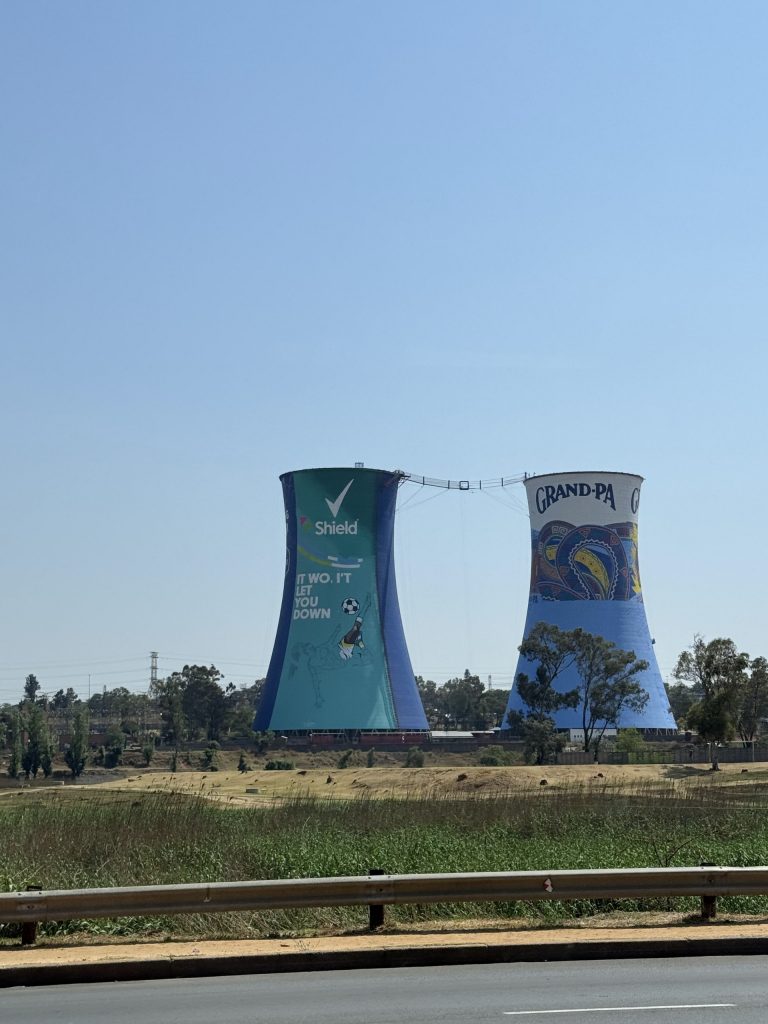
The protests, which began as a peaceful student demonstration, quickly escalated into a violent confrontation with police, resulting in the deaths of hundreds of people, including many young students. The uprising became a symbol of resistance against apartheid, leading to years of further unrest and government repression. Molefi, another CGEE leader for our time in South Africa, guided us through significant sites in Soweto, recounting the area’s rich yet painful history, as he pointed out the separated white, colored, and black communities created during the forced movement of people using the ‘pencil test’ (seeing if a pencil stuck in their hair). As we drove past important landmarks, we gained a deeper understanding of Soweto’s role in the fight for freedom and equality in South Africa.
The following morning, we continued our exploration of Soweto by visiting the Regina Mundi Catholic Church, a place that holds immense historical and spiritual significance in the community. Known as “the people’s church,” Regina Mundi served as a refuge and meeting point during the turbulent years of apartheid when political gatherings were banned. As we walked through the church, we marveled at the intricate stained glass windows, which depict scenes of South Africa’s journey to freedom, including tributes to Nelson Mandela. The church’s walls still bear scars from the past—bullet holes left from police shootings during anti-apartheid demonstrations. Upstairs, we discovered an area where visitors have left their signatures, messages of hope, and solidarity over the years, adding a personal and collective layer to the site’s historical weight.






In the afternoon, we visited Nelson Mandela’s former home in Vilakazi Street, another key landmark in Soweto’s history. Now a museum, the ‘matchbox’ house offers a window into the life of Mandela. As we explored the house, filled with artifacts, photographs, and memorabilia from his time as a political leader and family man, we gained insight into Mandela’s personal journey and the sacrifices he made in the fight for South Africa’s liberation. Though his favorite couch was still present, we were unable to sit on it due to our tour guide’s fear we would become the next president. This visit offered a powerful conclusion to our tour, as we reflected how when faced with such discrimination and hate, Mandela still prioritized and preached forgiveness and reconciliation.
Today, we spent the day at the Lesedi Cultural Village for the Cultural Tourism Experience. Lesedi gets its name from King Moshoeshoe’s quote,
“Our culture is the light of our nation”
We started the experience with a drum circle, where we were led through different beats in a call-and-response activity.
Following our performance that really represented St Olaf in all our musical prowess, we walked through the village getting to learn about five different tribes in South Africa- Zulu, Xhosa, Pedi, Basotho and Ndebele. The tour ended with the different tribes performing traditional songs and dances for war, hunting, and celebration, concluding with a buffet of varying South African cuisines- including crocodile (featured below)!
While this experience was extremely interesting and we loved getting to learn about the different cultures, it was difficult for us to fully enjoy ourselves in the context of our coursework so far. In contrast to everyone surrounding us filming the performances and taking pictures of the villagers, I could hear my classmates debating what would be ethical for us to document. In my efforts to try to document the tour for this blog post, I decided to take pictures only of the buildings and scenery, but none including the performers.
While discussing the harms and benefits of ‘cultural tourism’, our class explored our experience and how we fit as visitors who’s “essential motivation is to learn, discover, experience and consume the cultural attractions and products offered by a tourist destination”. One of the points highlighted in our discussion was the question of who was profiting off of commercializing these tribe’s culture. While the village was initially founded by the tribes, their heavy reliance on tourism caused the business to suffer over Covid, bringing them to be bought by aha hotels & lodges. This new ownership brings into question the experience of the tribes, whether they have creative control and if they are truly benefiting from us being there. Though our intentions visiting the Lesedi Village were educational, it really reminds us to be aware of our impact towards local environments in our efforts to be ethical tourists.
We’ll be spending the next week in South Africa before flying over to Namibia for the next leg of our journey! I hope you enjoyed keeping up with our travels so far, I’ll be signing off now for our early wake up for 7:45am mass tomorrow at Regina Mundi. Stay tuned for the next post!
Literally me this time,
Fiona
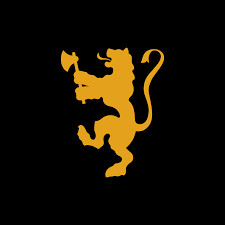

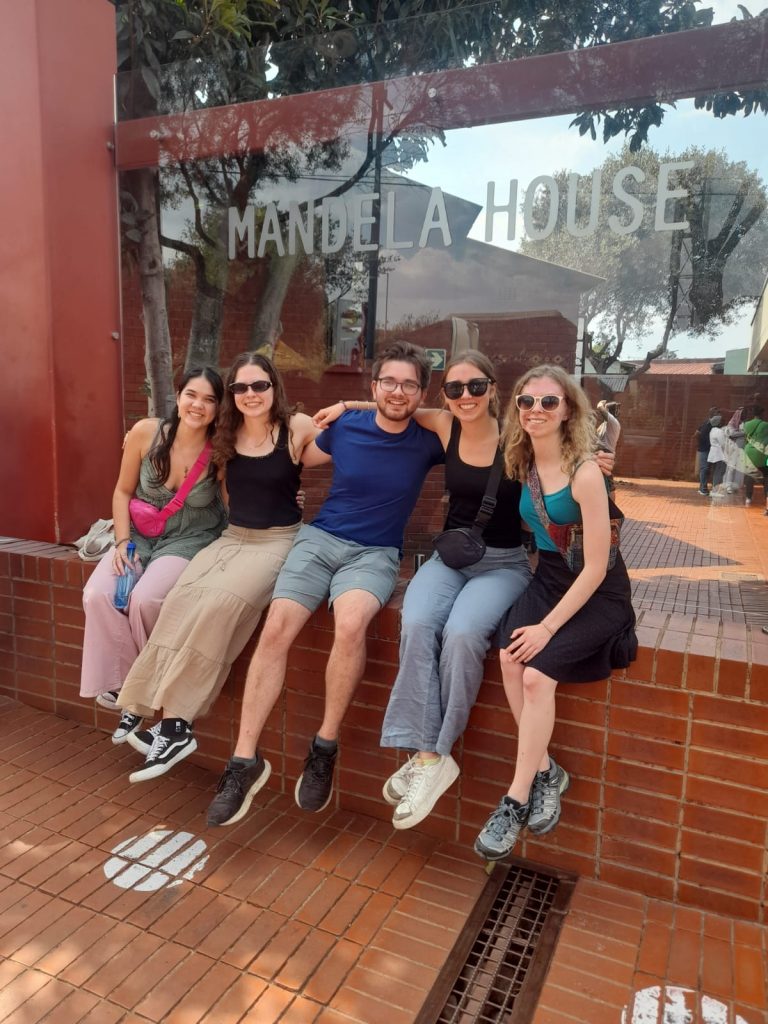
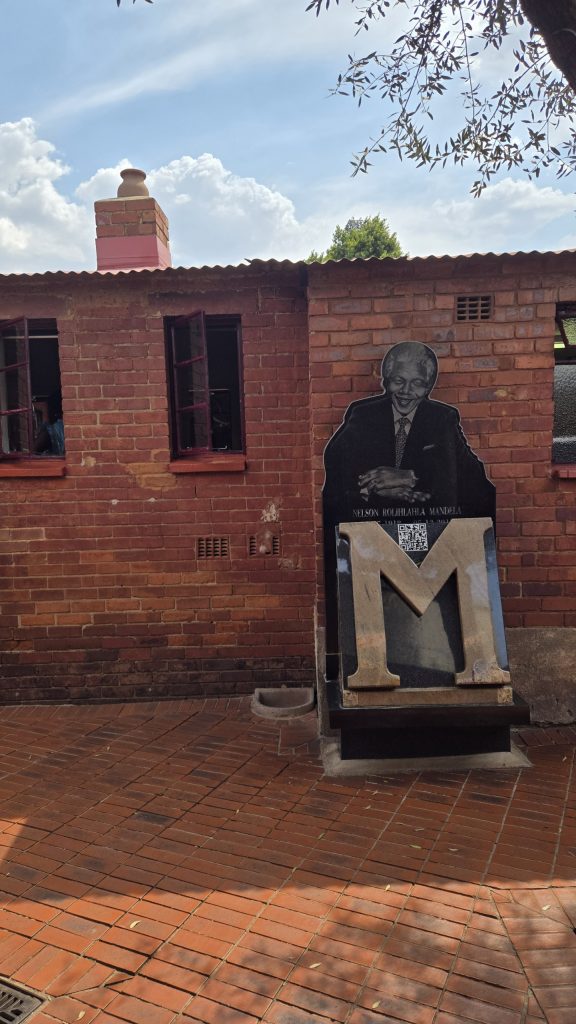

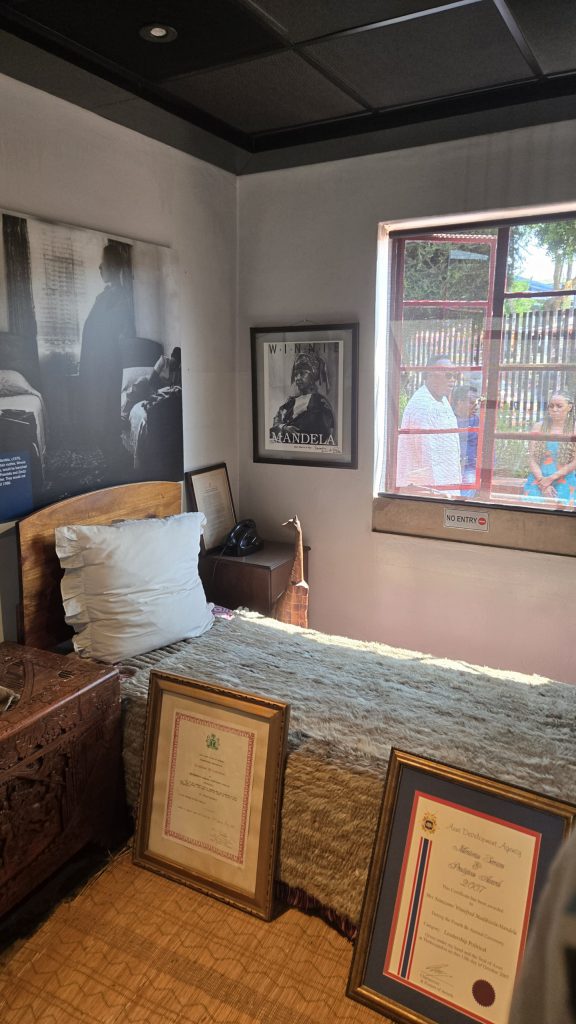
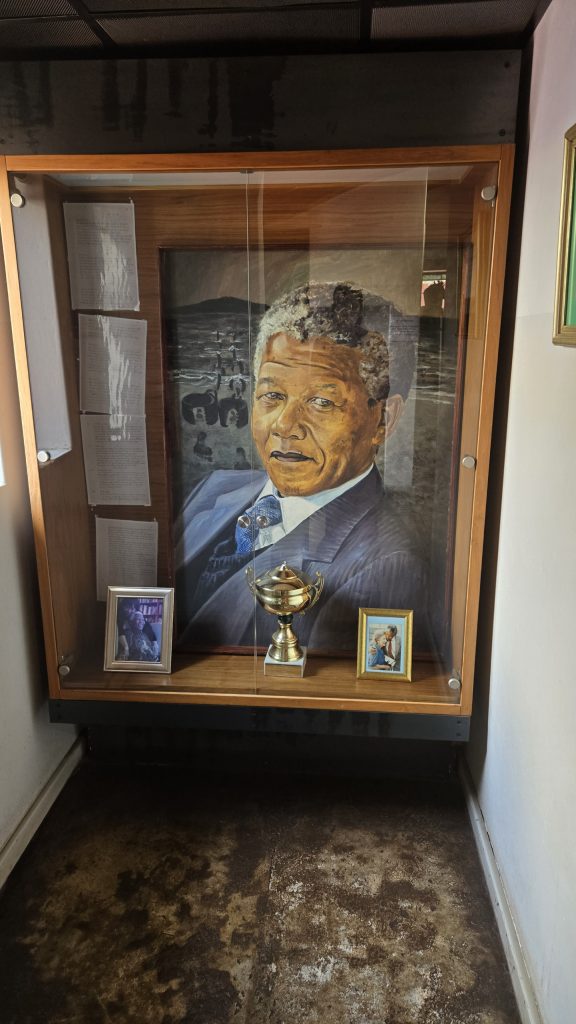
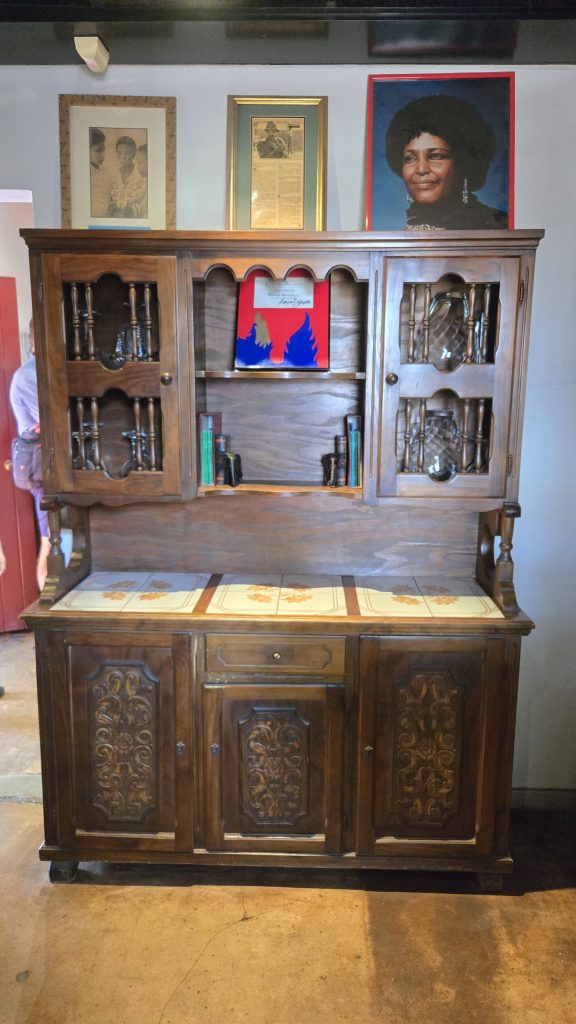
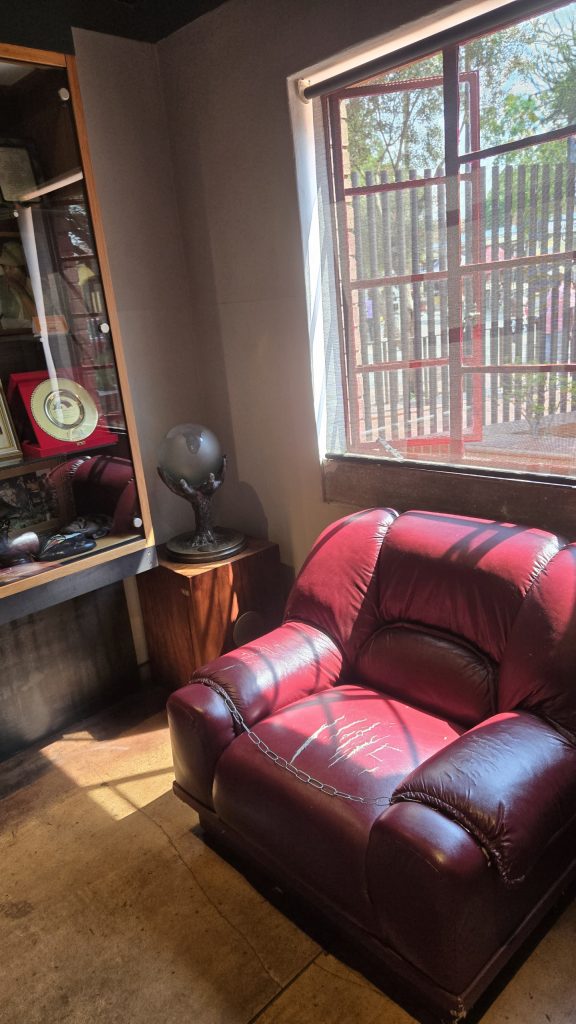
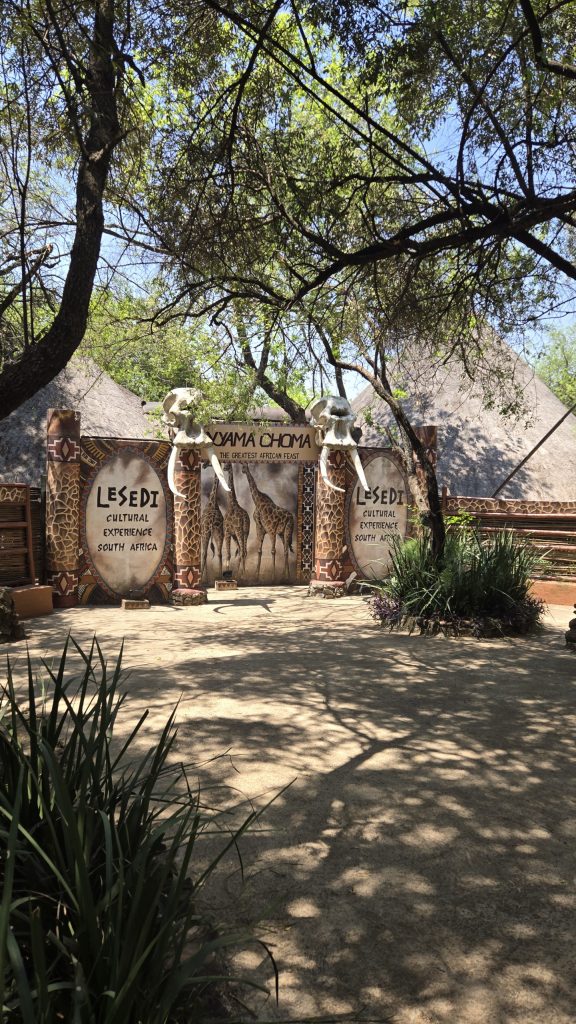

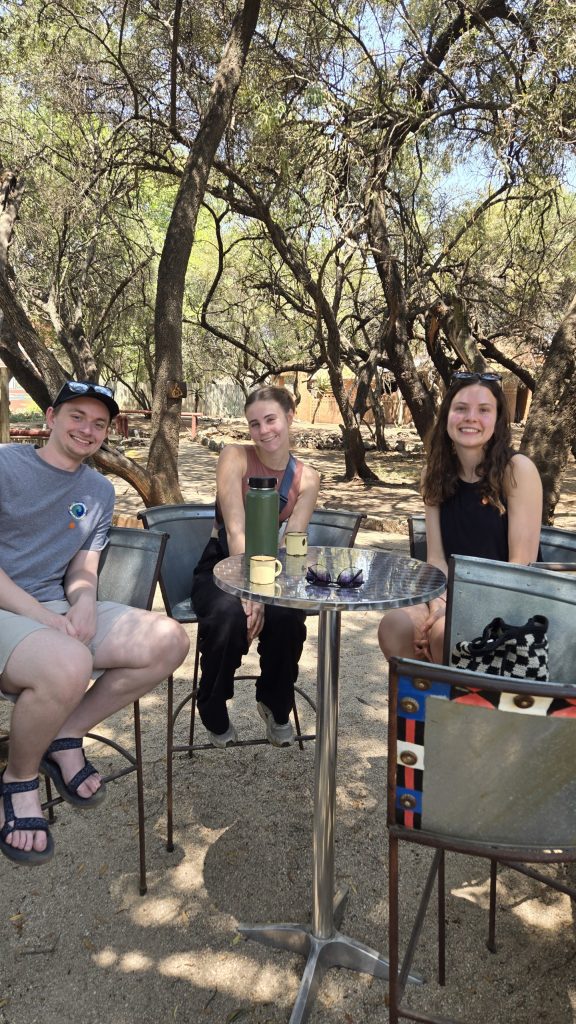
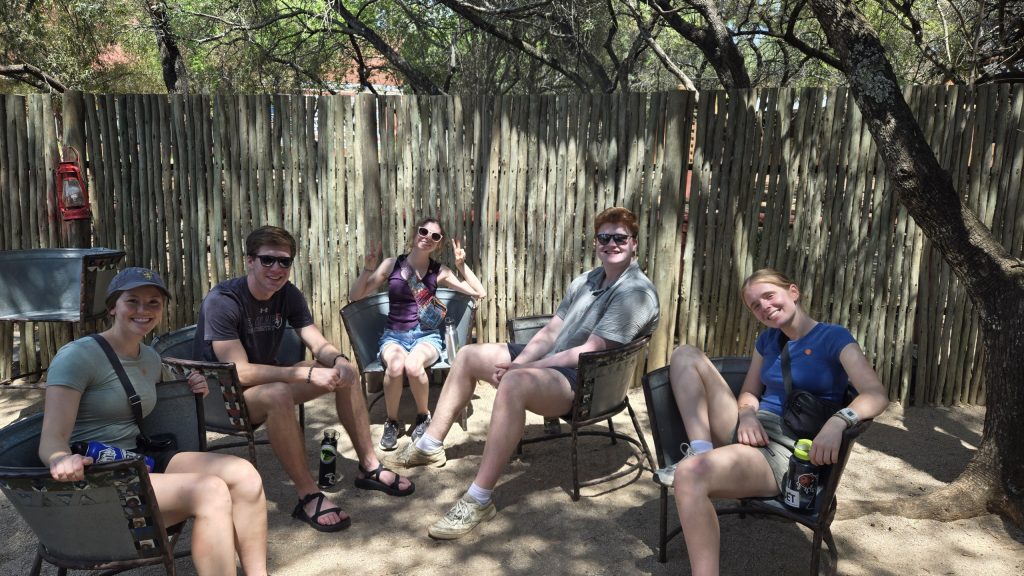
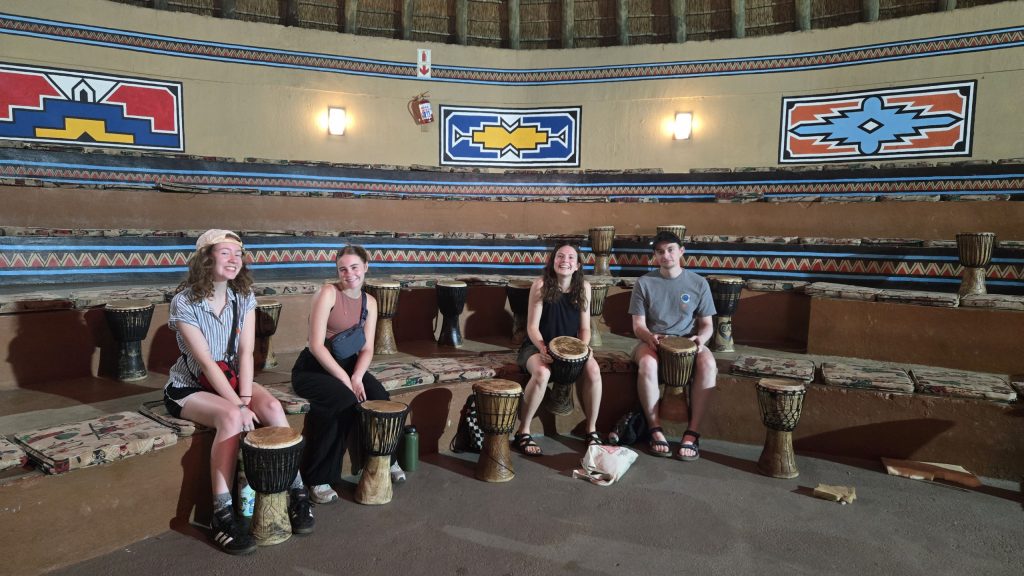
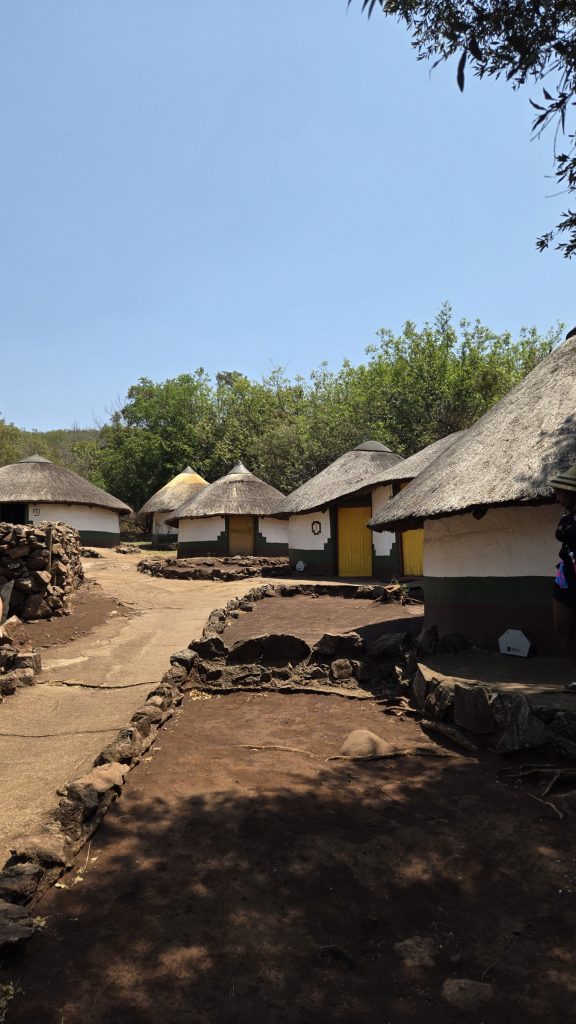
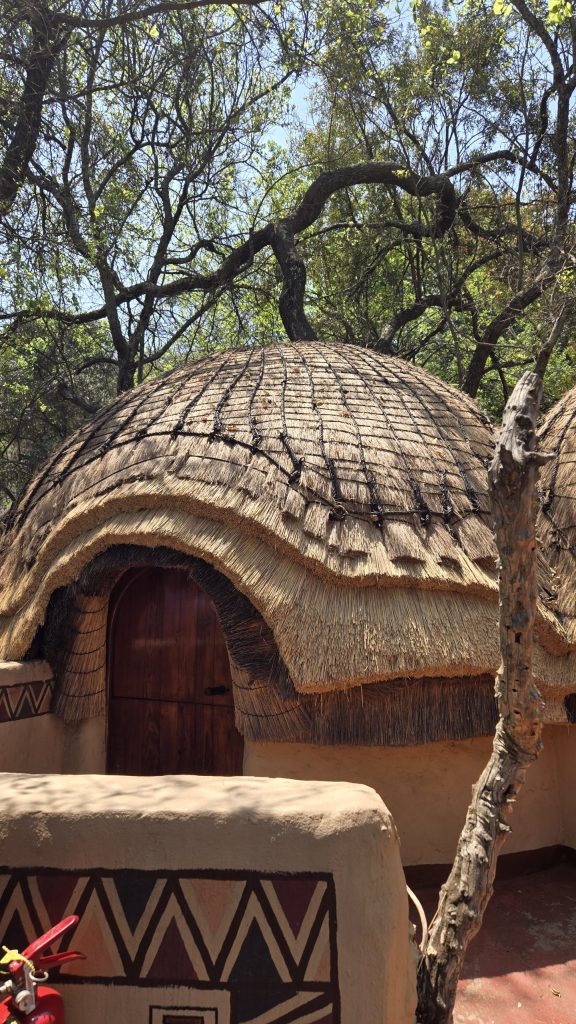
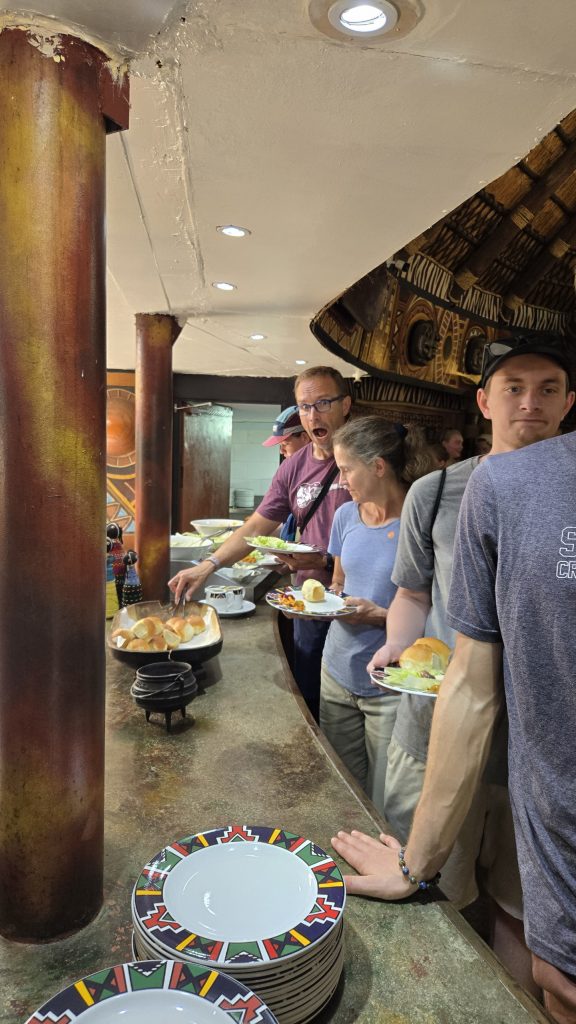
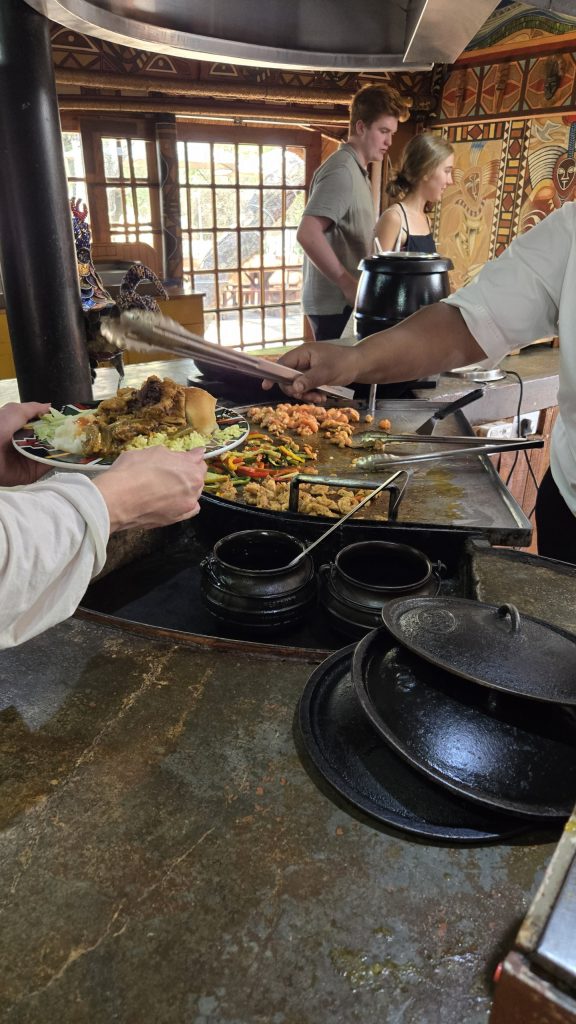
Leave a Reply